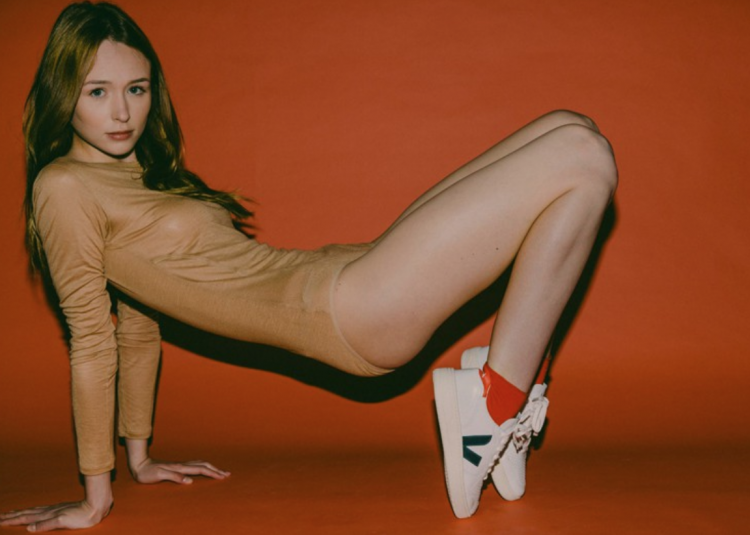Sustainability Series: Amazonian Streetstyle

The production chain of Veja trainers is made 100% transparent by the company, and the shoes travel across half of the globe to reach their retail destination, helping to stabilize the communities that are involved along the way.
Veja trainers are made with a canvas body, a rubber sole, and a leather trademark logo. These three components are each sourced with a completely transparent supply chain, all starting in Brazil. Once the materials are sourced or harvested, the trainer is fabricated in a workshop space in the South of Brazil. Once assembled, the trainers are taken by boat to Le Havre, France, where they are then dispatched to the suburbs of Paris by barge for packaging and distribution.
(Image Credit: Veja)
The beginning of the supply chain starts with the sourcing of 100% organic cotton. According to their website, Veja has worked for the past seven years with ADEC (Associação de Desenvolvimento Educacional e Cultural de Tauá), a co-op of harvesters in the region who pool their loads together. This allows for the harvesters to take their harvests and add them to the collective, avoiding the need for a middleman and raising their total profits earned. In 2013, the co-op price for organic cotton was 2,45 EUR/kg, compared to the market price of cotton at 2,04 EUR/kg. This priceline falls within the qualifications for fair trade and is based on the cost of living in the region.
(Image Credit: Veja)
Although organic cotton comes at a higher premium than cotton, there are many more environmental factors involved in its production. Too heavy or too light rainfalls make a drastic impact on the growing of the organic cotton, as well as bugs such as caterpillars, who can devastate the crop. Another factor is the soil, which can be stripped of nutrients after only growing one type of crop many years in a row. To combat these issues as best as they can, the harvesters, at the request of ESPLAR – a Brazilian NGO based in Fortaleza, have planted various species of trees surrounding the organic cotton fields, providing cover to the plants as well as a natural form of bug repellent.
(Image Credit: Veja)
Once the organic cotton is harvested and bought by Veja, it is spun into canvas that is the body of the shoe.
(Image Credit: Veja)
The sole of the Veja shoe is made from rubber that is harvested from the Amazon rainforest, the only place in the world where rubber trees grow in the wild. Located in the Brazilian state of Acre, Veja works with an association of rubber tappers. According to the Veja website, there are approximately 60 Amazonian families living in the forest involved in the harvesting of the rubber for the sole of the shoes.
(Image Credit: Veja)
These rubber tappers use a new technique from the University of Brazilia, called FDL (Folha Desfumada Liquida – Liquid Smoked Sheet). FDL allows for the rubber tappers to transform the collected liquid rubber into firm rubber sheets, without the use of industrial processes. Once in solid form, the rubber is sent to the factory in the South of Brazil where it is shaped into soles.
The alternative to rubber sourced from the rubber tree, is synthetic rubber, which was made popular in the 60’s, however, synthetic rubber is derived from petroleum and fluxgates in parallel with the oil market. The synthetic rubber produced in factories contaminates water and air sources that must be collected, contained, and destroyed so that they do not come into human contact.
(Image Credit: Veja)
The third ingredient in the making of a Veja trainer is the leather used in the logo on the side of the shoes. The Veja website explicitly marks that their leather does not come from fair trade principles but explains that cattle breeding requires overheads costs that cannot be set up like organic cotton or rubber production. However, Veja does source their leather from only cattle that are not from the Amazon, as they are a main factor in deforestation. The tanning and dying processes are all done in-house in the Veja factory in the South of Brazil.
Once the shoes have been fabricated in Brazil, orders to Europe are shipped by boat, while orders to Asia and America are sent by plane. Veja says in their “Transparency” section of their website, that they acknowledge that the dyes they use are not made from natural products, that their laces use non-organic cotton, and that their distribution patterns cause excess pollution, but they are constantly using new research and technology to pursue ways to stay ahead of the curve by creating new solutions to their own sustainability problems.
(Image Credit: Veja)
Even without a transparent supply chain, Veja is still setting new standards in the industry. The sustainable shoe company does not advertise and does not have excess stock. Veja works on a made-to-order basis, and uses the fund saved from no advertising to sell the shoes at a competitive market price. According to Veja, “Fabrication costs are 3 to 4 times higher than other footwear brands because the trainers are made with dignity.” Because Veja cycles their money back through their supply chain, every farmer and producer are fairly remunerated.
Recently, Veja has added a line of handbags and vegan shoes to their product lines. The design is the global standard white trainer shoe for men, women, and kids, and is sold in 23 countries around the world. Veja is currently in their eighth year working towards Fair Trade Certification and now rely on 97% certified organic cotton farmers.















